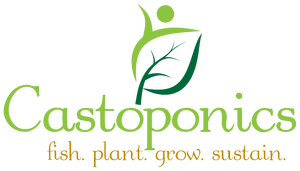Growing hydroponically offers many advantages, but like any gardening method, it comes with its own set of challenges. Here are ten common problems people encounter when growing hydroponically, along with potential solutions:
- Nutrient Imbalance:
- Problem: Plants may exhibit signs of nutrient deficiencies or toxicities due to imbalances in the nutrient solution.
- Solution: Regularly monitor and adjust nutrient levels based on plant growth stage and water quality testing. Follow recommended nutrient formulations for specific plant types.
- pH Fluctuations:
- Problem: pH levels in the nutrient solution can fluctuate, affecting nutrient availability to plants.
- Solution: Monitor pH levels regularly and adjust using pH up or down solutions as needed to maintain the desired range (typically 5.5-6.5 for most plants).
- Root Rot:
- Problem: Root rot can occur due to overwatering, poor oxygenation, or pathogens in the root zone.
- Solution: Ensure proper oxygenation of the root zone with air stones or oxygen pumps. Use sterile growing media and maintain proper drainage to prevent waterlogging.
- Algae Growth:
- Problem: Algae can proliferate in hydroponic systems, competing with plants for nutrients and oxygen.
- Solution: Keep the system protected from light to inhibit algae growth. Use opaque containers or cover exposed surfaces with reflective materials. Maintain proper sanitation practices to minimize algae spores.
- Pests and Diseases:
- Problem: Pests such as aphids, whiteflies, or fungal diseases can affect hydroponic plants.
- Solution: Implement preventive measures such as introducing beneficial insects, using organic pest control methods, and maintaining a clean growing environment. Quarantine new plants to prevent introducing pests or diseases.
- Temperature Extremes:
- Problem: Fluctuations in temperature, especially in indoor setups, can stress plants and affect growth.
- Solution: Use temperature control measures such as fans, ventilation, or heaters to maintain optimal temperature ranges for plant growth (typically 65-80°F or 18-27°C).
- Clogging in Irrigation System:
- Problem: Irrigation lines or drippers can become clogged with mineral deposits or organic matter, affecting water distribution.
- Solution: Regularly clean and flush irrigation lines with a mild vinegar solution or commercial line cleaner. Use filtered or distilled water to minimize mineral buildup.
- Poor Plant Growth:
- Problem: Plants may exhibit stunted growth or poor yields despite adequate environmental conditions.
- Solution: Evaluate and adjust factors such as lighting intensity, nutrient concentration, and plant spacing to optimize growing conditions. Consider factors such as plant genetics and cultivar selection.
- Electrical Failures:
- Problem: Power outages or equipment malfunctions can disrupt essential systems such as water pumps or lighting.
- Solution: Install backup power sources such as battery-operated air pumps or uninterruptible power supplies (UPS) to prevent downtime during electrical failures. Regularly maintain and inspect electrical equipment for signs of wear or malfunction.
- Inexperienced Management:
- Problem: Lack of experience or knowledge in hydroponic gardening can lead to mistakes or suboptimal practices.
- Solution: Educate yourself through research, workshops, or online courses on hydroponic gardening principles and best practices. Start with small-scale systems and gradually scale up as you gain experience and confidence.
By addressing these common problems proactively and implementing appropriate solutions, hydroponic growers can overcome challenges and achieve successful and bountiful harvests. Regular monitoring, attention to detail, and a willingness to adapt are key to maximizing the potential of hydroponic gardening.

